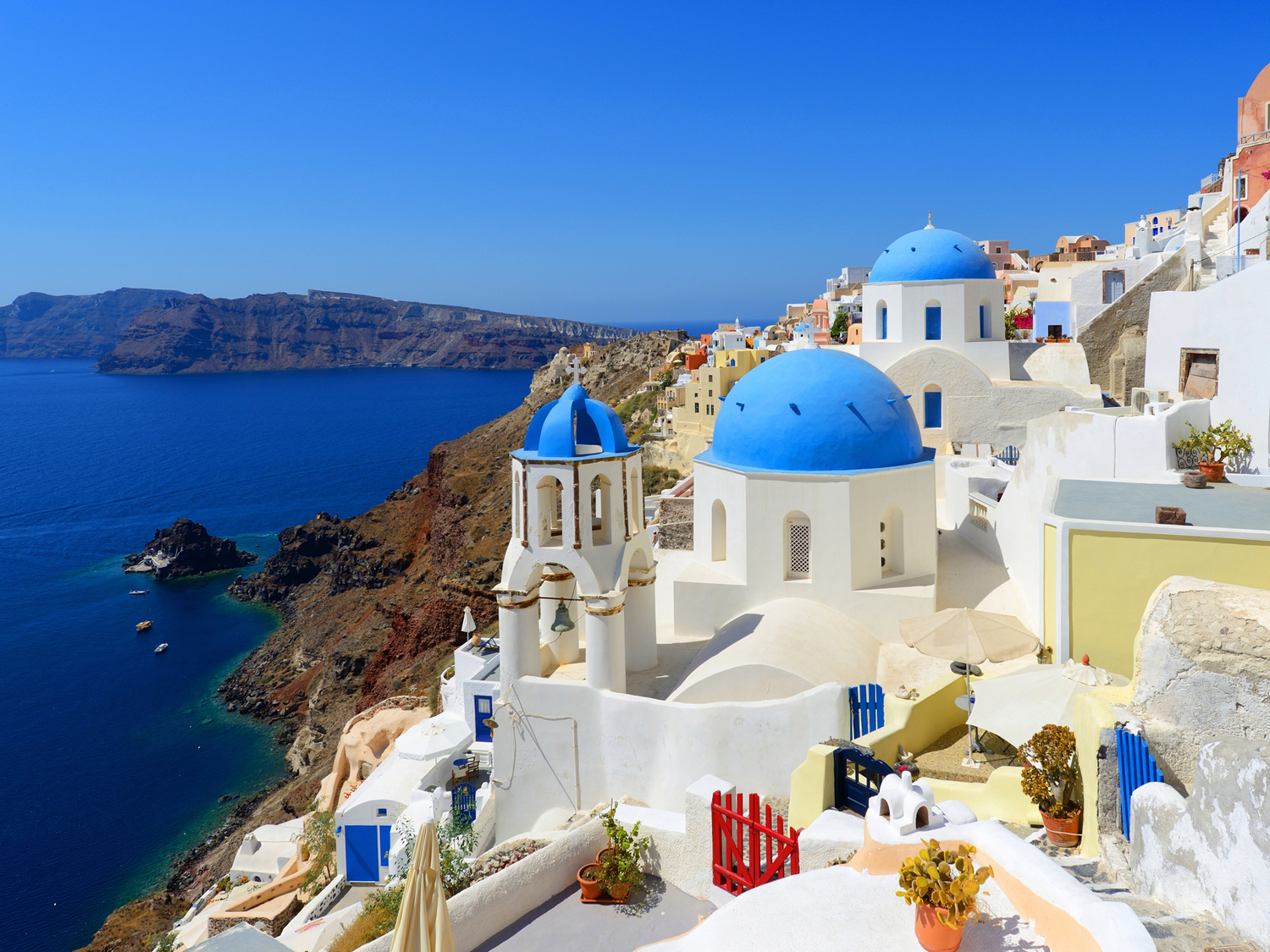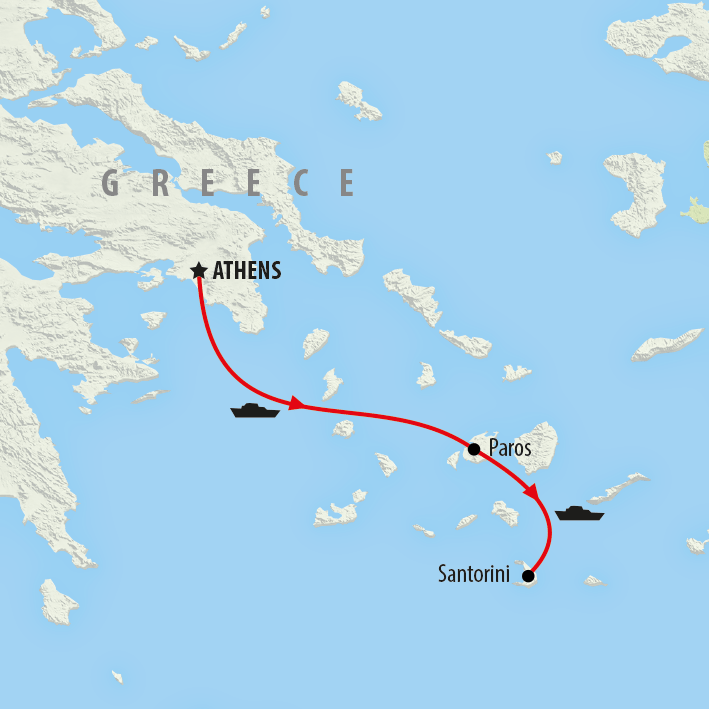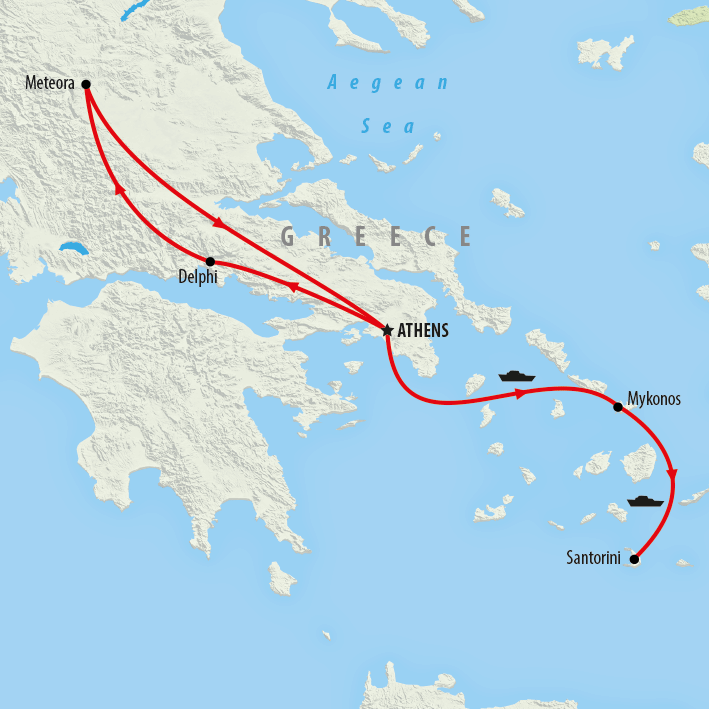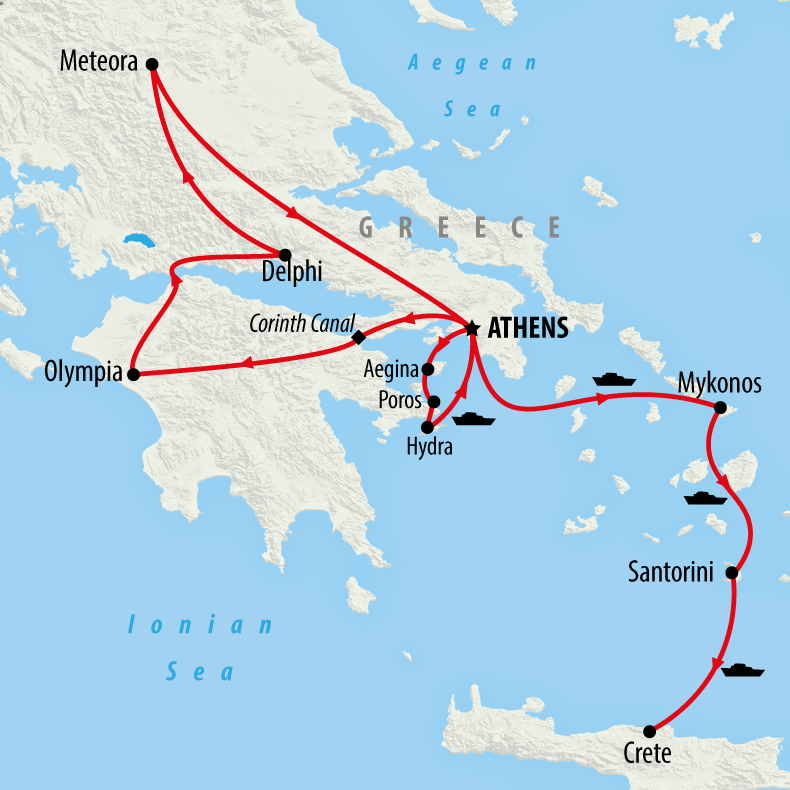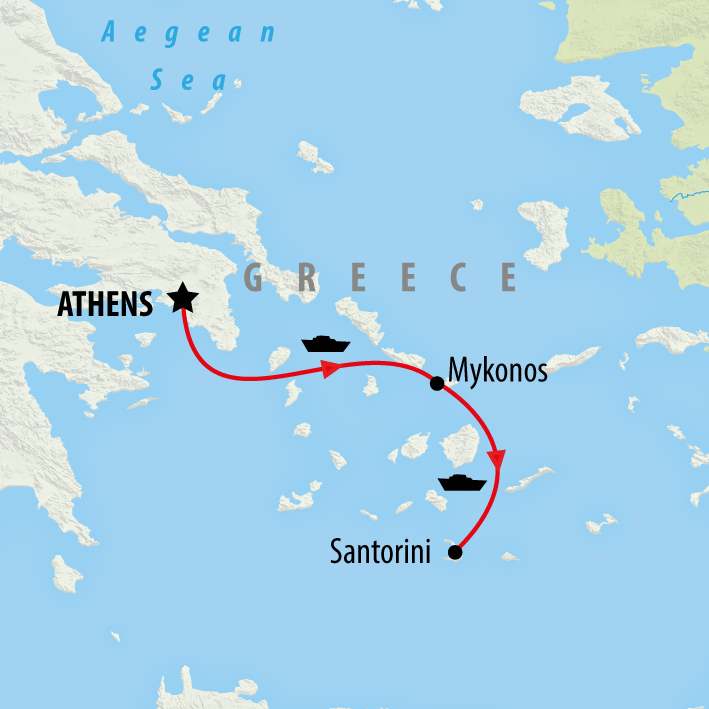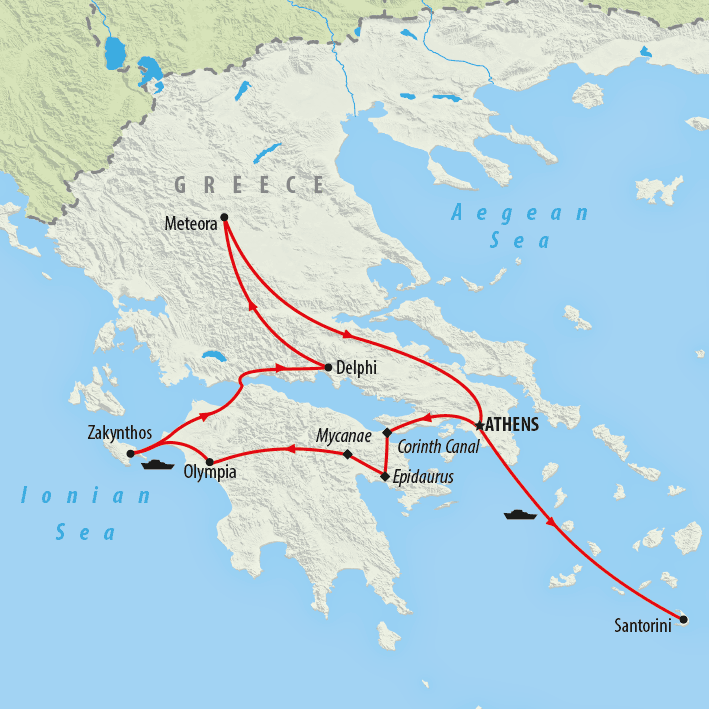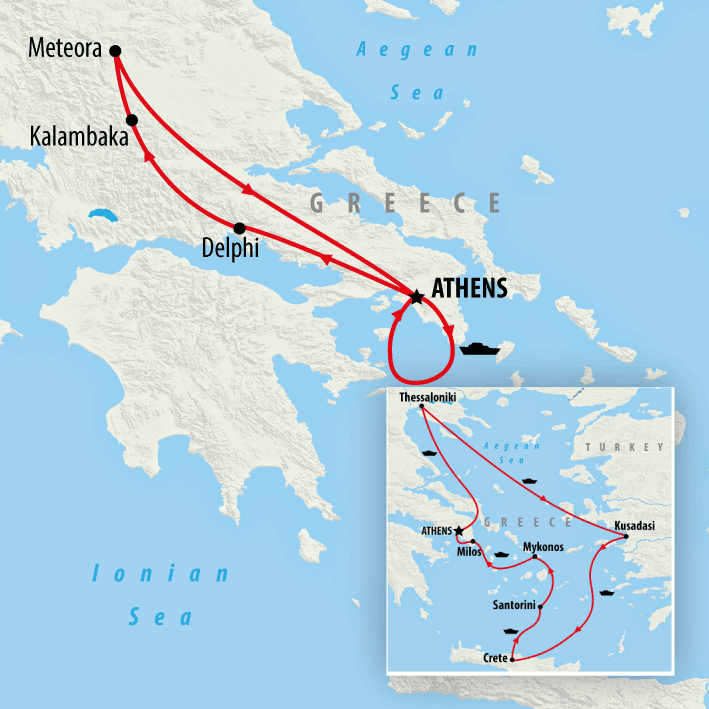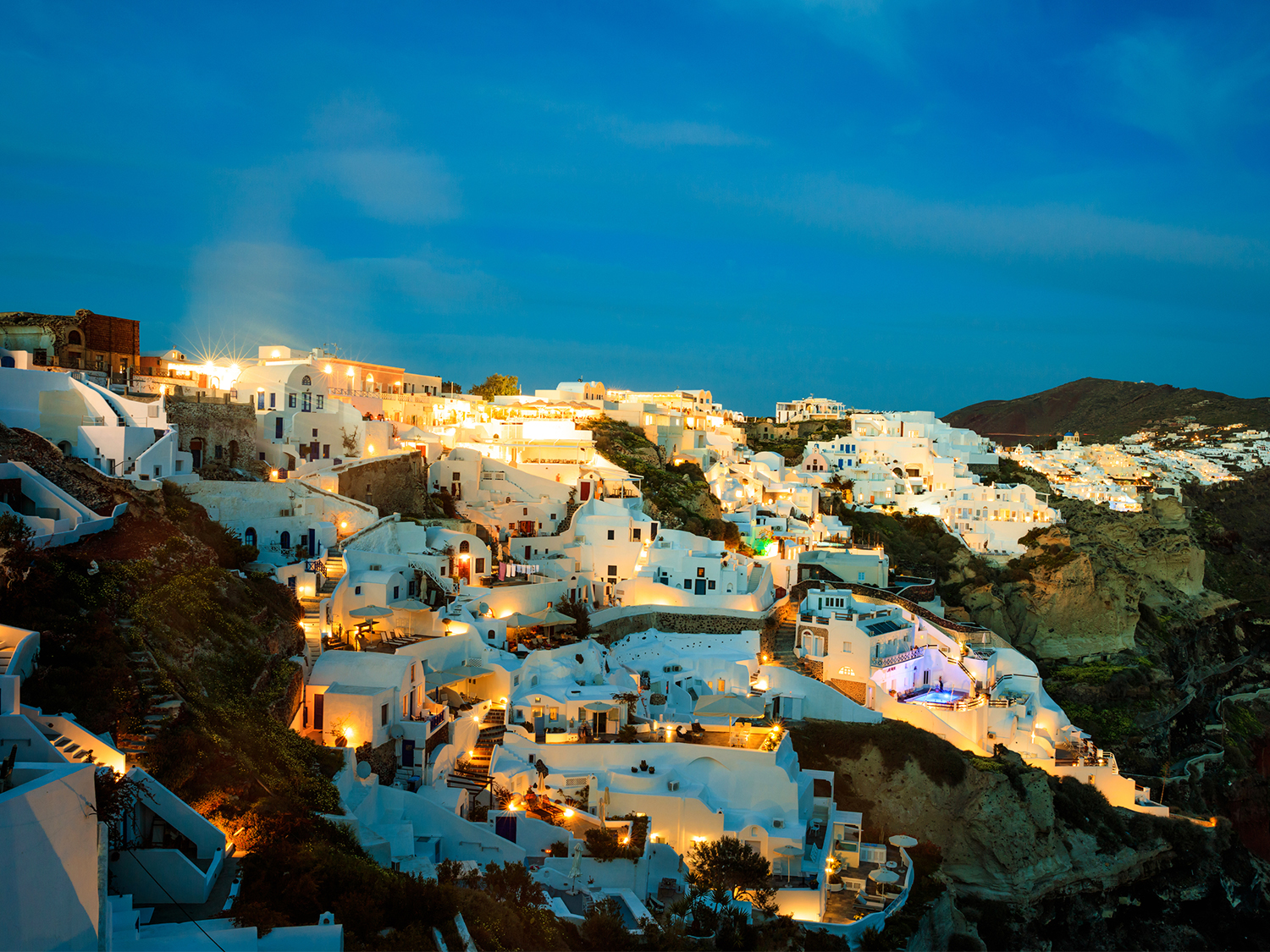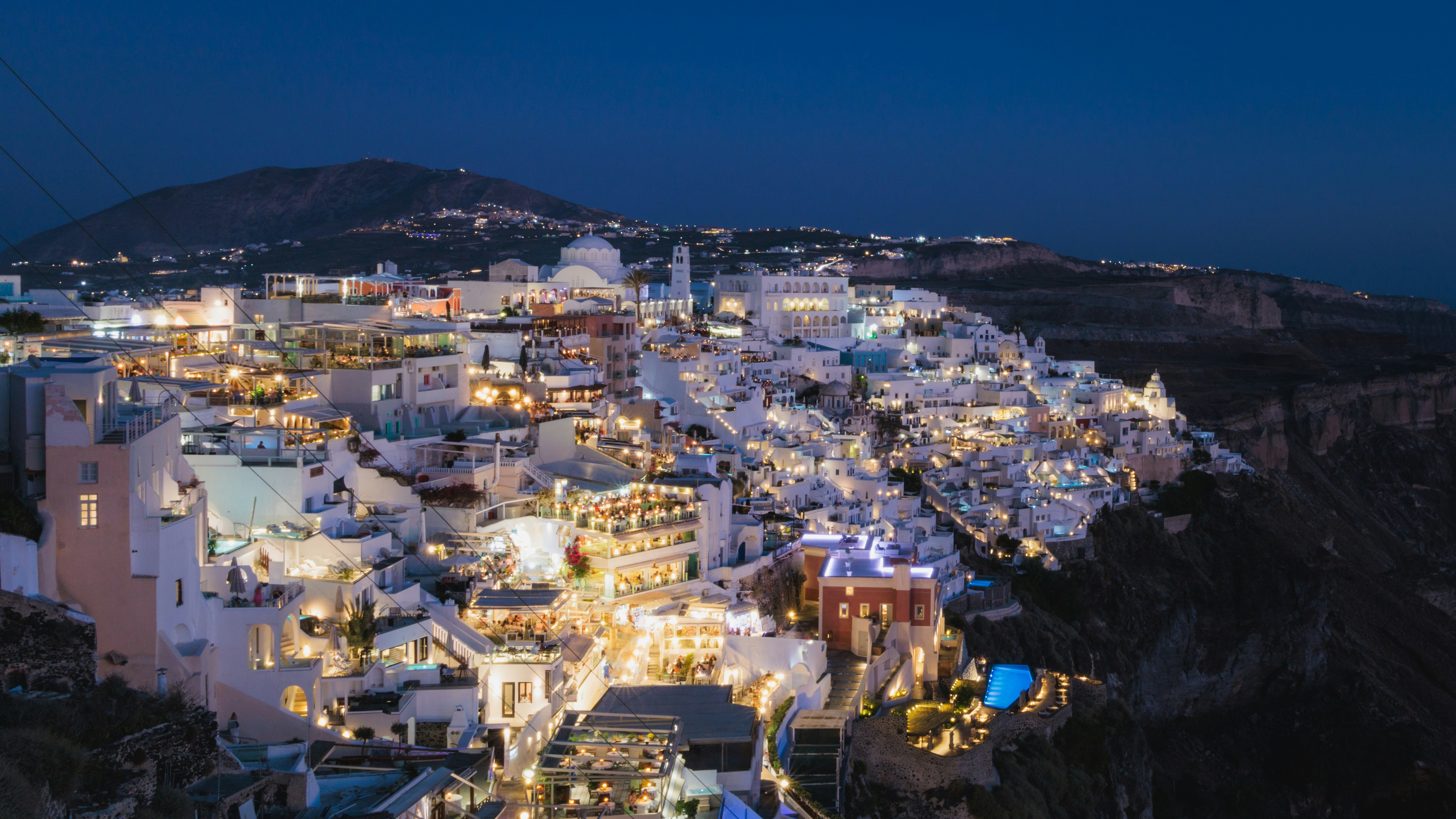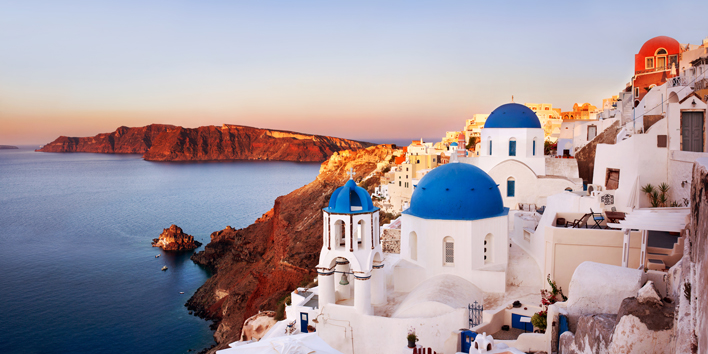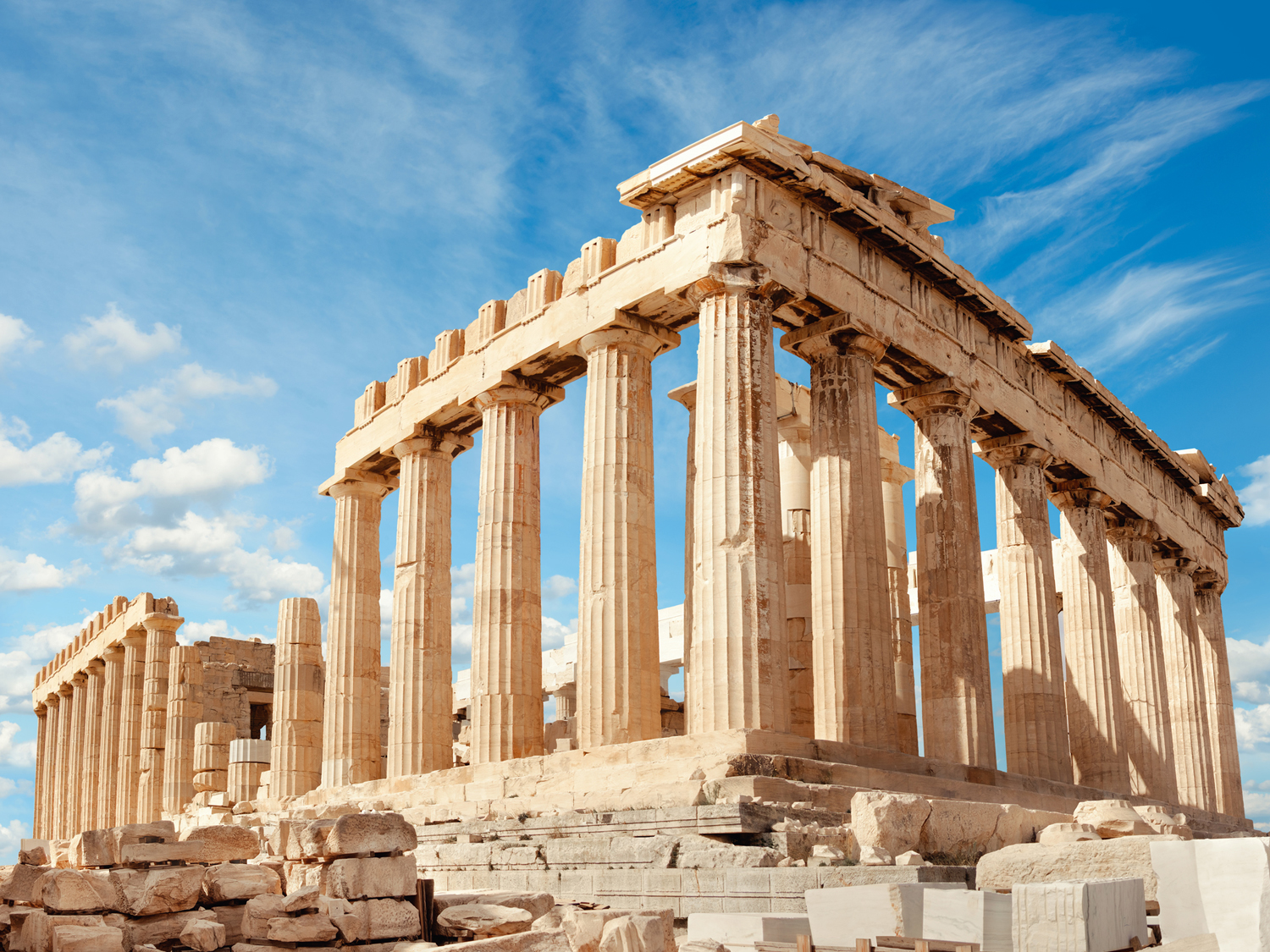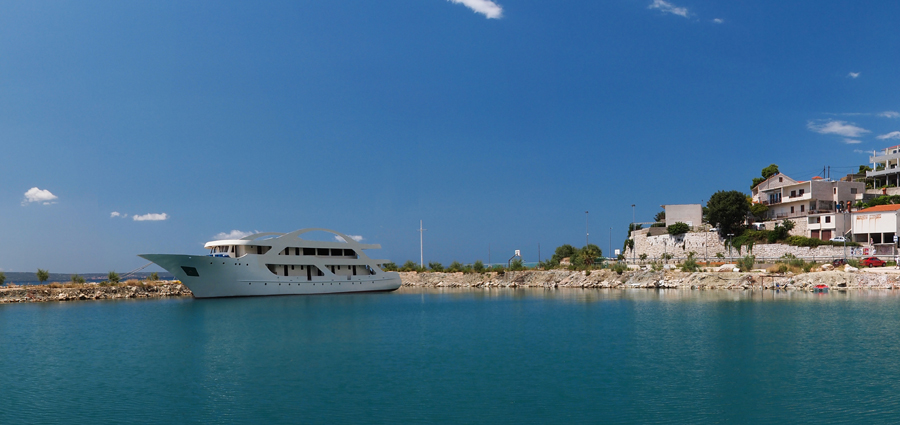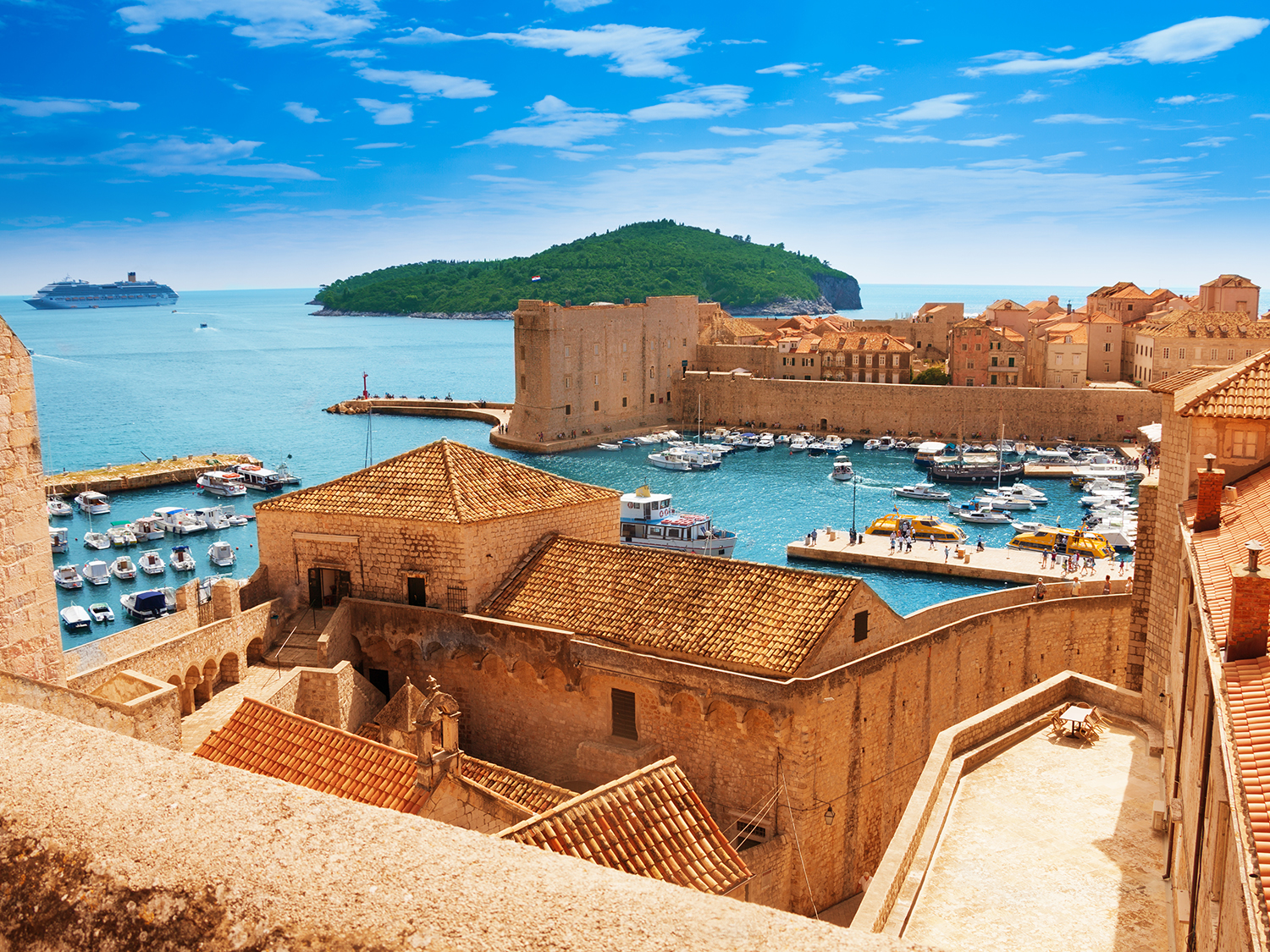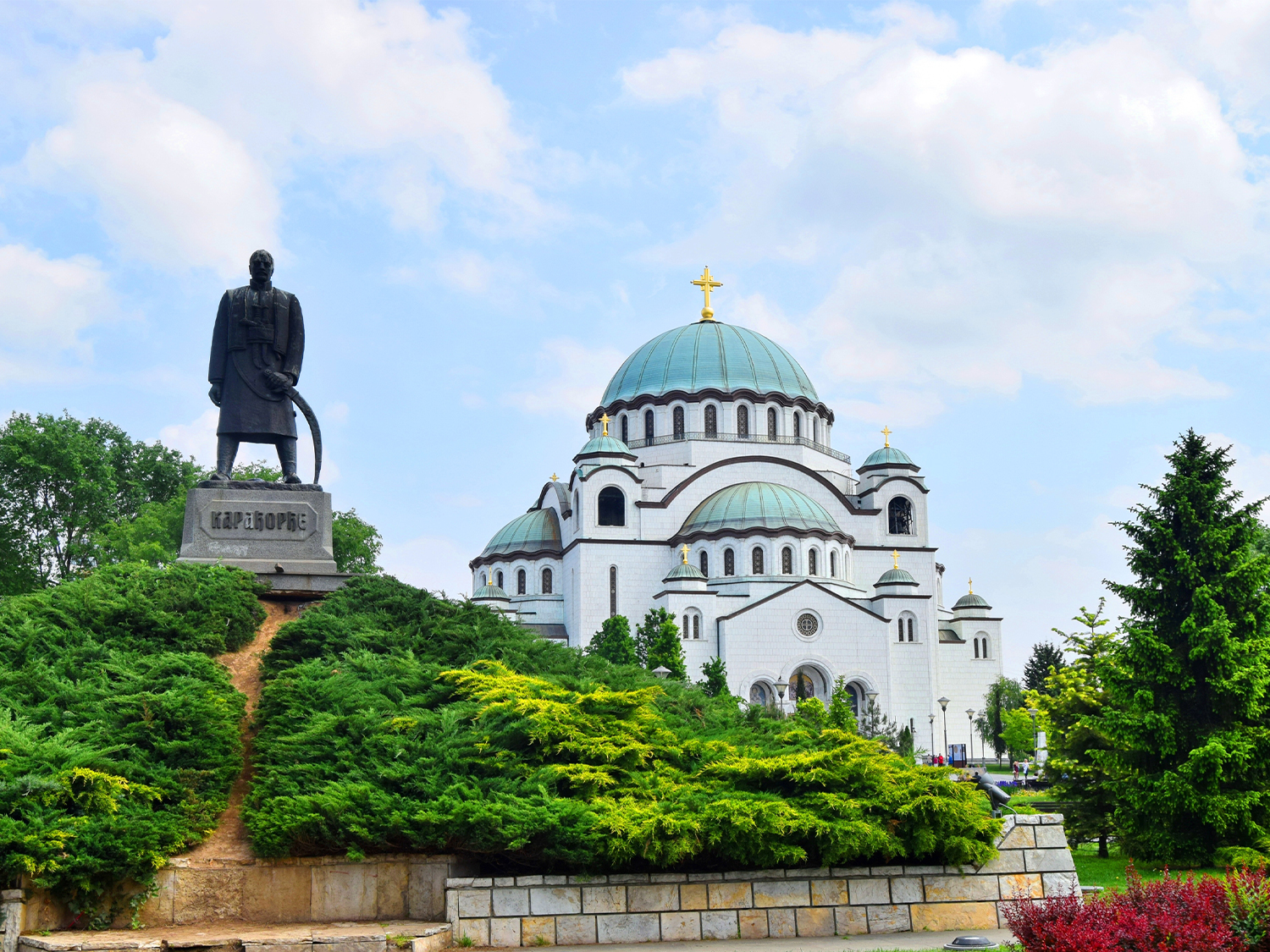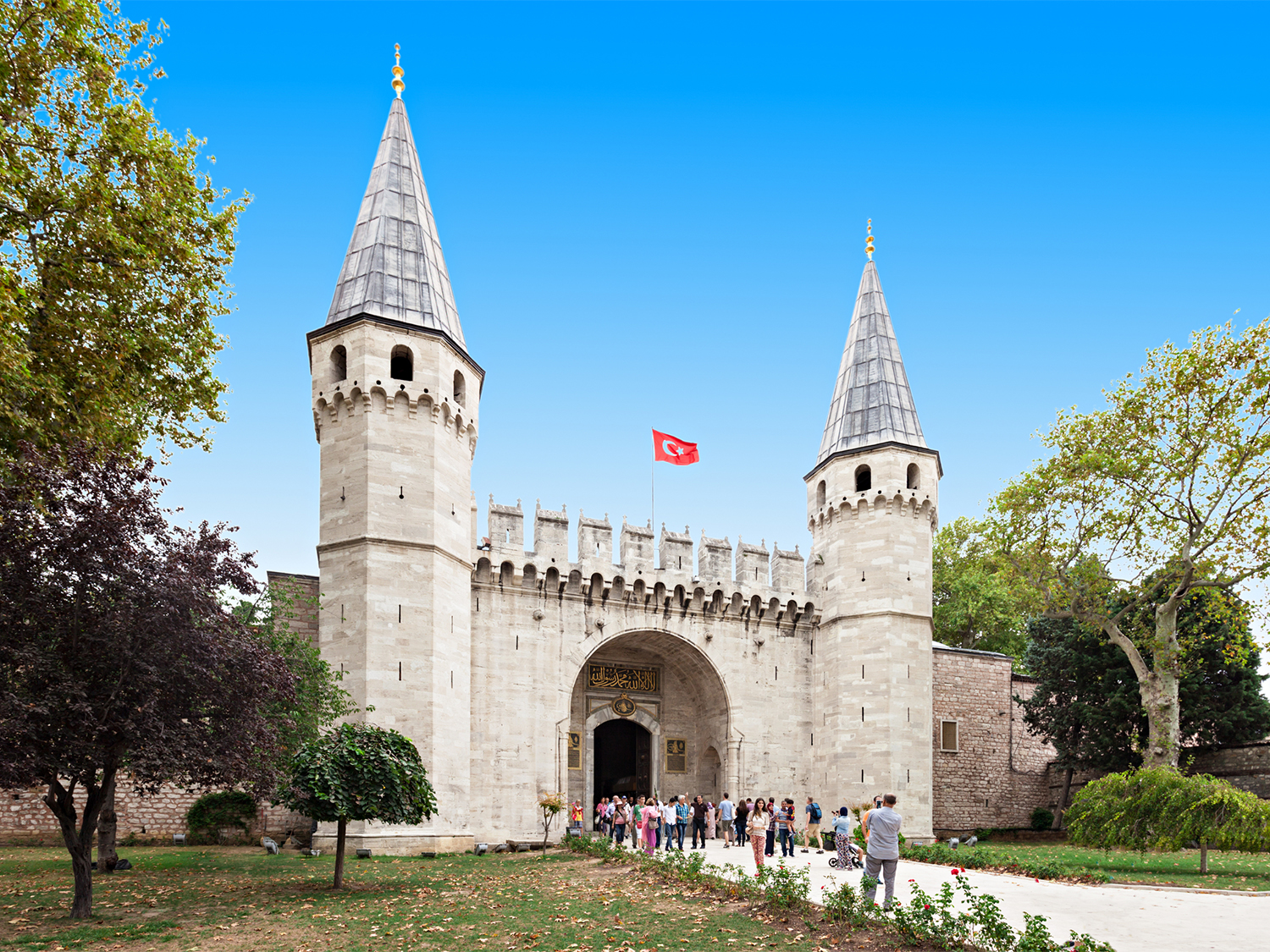Guided tours to SantoriniExperience the Magic of Santorini: Guided Tours to Uncover Hidden Gems and Iconic Sights
When do you want to go?
2024
I'm flexible
Passengers
Adults (18+)
Children (0 - 17)
Welcome to Santorini
Santorini is one of the most picturesque and iconic islands in Greece, renowned for its stunning vistas, whitewashed buildings, and rich history. Officially known as Thira, this volcanic island is part of the Cyclades group in the Aegean Sea.
Santorini’s dramatic landscape is the result of one of the largest volcanic eruptions in recorded history, known as the Minoan eruption, which occurred around 1600 BCE. This catastrophic event led to the collapse of the central part of the island, forming a large caldera that was subsequently filled by the sea. Today, the caldera is a defining feature of Santorini, surrounded by steep, multi-colored cliffs that rise nearly 300 meters (980 feet) above the sea.
The island is essentially a volcanic group of five islands: Thira (the main island), Thirasia, Aspronisi, Palea Kameni, and Nea Kameni. The latter two are located within the caldera and are still active volcanic centers. Visitors often take boat tours to Nea Kameni to walk on the volcanic soil and see the active craters, which emit sulfurous gases, a reminder of the island’s still-living geology.
Guided tours to Santorini
Guided tours to Santorini offer an immersive way to explore the island's stunning landscapes, rich history, and vibrant culture. These tours often include visits to iconic sites such as the cliffside village of Oia for its world-famous sunsets, the archaeological ruins of ancient Akrotiri, and the black sand beaches of Perissa or Kamari. Knowledgeable guides provide in-depth insights into the island's volcanic origins, its role in ancient civilisations, and modern-day life in Santorini. Many tours also include wine tastings at local vineyards, boat trips around the caldera, and opportunities to explore lesser-known villages, ensuring a comprehensive and enriching experience.
What to expect when visiting Santorini?
Scenic Beauty
The island’s dramatic scenery, featuring steep cliffs that drop into the deep blue Aegean Sea, is truly awe-inspiring. The white-washed buildings with blue domes, particularly in towns like Oia and Fira, are postcard-perfect and offer some of the most iconic views in Greece. Sunsets in Santorini are legendary, with visitors often flocking to the caldera’s edge to witness the sky ablaze with color.
Unique Beaches
Santorini’s beaches are unlike those found elsewhere, with sands that range from black to red to white, all a result of the island’s volcanic history. Popular beaches like Red Beach, Kamari, and Perissa offer crystal-clear waters, opportunities for water sports, and vibrant beachside atmospheres.
Historical and Cultural Sites
Expect to explore ancient ruins, such as the prehistoric city of Akrotiri, preserved in volcanic ash and offering a glimpse into the advanced Minoan civilisation. The archaeological site of Ancient Thera also provides insight into the island’s rich past. Museums in Fira, such as the Museum of Prehistoric Thera, house significant artefacts that further illustrate Santorini’s history.
Culinary Delights
Santorini is also a culinary destination, known for its fresh seafood, local vegetables, and unique wines. The island’s volcanic soil lends a distinctive character to its wine, particularly the white Assyrtiko, which is a must-try. Dining at a cliffside taverna with views over the caldera is an unforgettable experience.
Relaxed Atmosphere
While Santorini is a popular tourist destination, it maintains a relaxed, laid-back vibe. Whether you’re wandering through the narrow streets of a village, lounging on a beach, or enjoying a glass of wine with a view, the island invites you to slow down and savor the moment.
Popular Sites to See in Santorini
Oia Village
Oia is Santorini’s most iconic village, renowned for its breathtaking sunsets, which draw visitors from around the world. The village is characterised by its white-washed houses, blue-domed churches, and narrow, winding streets that are perfect for leisurely strolls. In addition to its picturesque architecture, Oia is home to the Maritime Museum, where you can explore the island's seafaring history and view fascinating exhibits related to the Cyclades' maritime culture.
Fira (Thira)
Fira, the bustling capital of Santorini, offers stunning views of the caldera and the Aegean Sea, particularly from its cable car that connects the old port to the town. The town is a cultural hub, featuring the Archaeological Museum of Thera, which houses artifacts from ancient Thira, and the Museum of Prehistoric Thera, showcasing treasures from the ancient city of Akrotiri, including well-preserved frescoes and pottery.
Frequently asked questions
When is the best time to visit Santorini?
The best time to visit Santorini is from late April to early November, when the weather is warm and the island is in full bloom. The peak season is from June to September, offering the best weather but also larger crowds. For fewer tourists and milder weather, consider visiting in May or October.
What is the currency in Santorini?
The currency used in Santorini is the Euro (€). Credit cards are widely accepted, but it's advisable to carry some cash for small purchases, especially in more remote areas or smaller establishments.
Is Santorini expensive?
Santorini can be quite expensive, especially during the peak tourist season. However, there are options for various budgets. Accommodations, dining, and activities range from luxury to more affordable choices, and travelling during the off-season can help reduce costs.
What are the best beaches in Santorini?
Santorini is known for its unique volcanic beaches. The most popular include Red Beach with its striking red sand, Kamari Beach with its black sand and water sports, and Perissa Beach, also with black sand and a vibrant atmosphere. Vlychada Beach is another good option for a quieter experience.
What should I pack for a trip to Santorini?
Pack lightweight clothing, sunscreen, sunglasses, and a hat for protection against the sun. Comfortable shoes are essential for exploring the island’s hilly terrain and cobblestone streets. A swimsuit is a must for beach days, and a light jacket or sweater is recommended for cooler evenings.
Can I drink tap water in Santorini?
It is generally recommended to drink bottled water in Santorini. Tap water is safe for brushing teeth and washing, but locals and tourists alike usually prefer bottled water for drinking due to the island’s limited fresh water supply.
What language is spoken in Santorini?
Greek is the official language spoken in Santorini, but English is widely understood, especially in tourist areas, hotels, restaurants, and shops.
Are there any cultural customs I should be aware of?
When visiting churches and monasteries, dress modestly, covering shoulders and knees. It's also customary to greet people with a friendly “Kalimera” (good morning) or “Kalispera” (good evening). Tipping is appreciated in restaurants and cafes, usually around 5-10%.
Greece travel guides
Plan your Greece tour with our range of useful travel guides, packed with information relating to weather, currency, visas, things to see and so much more!
Explore similar countries to Greece
Our customers say
Excellent
4.4 out of 5 based on 275 reviews
